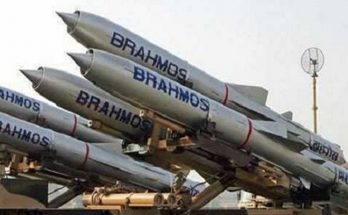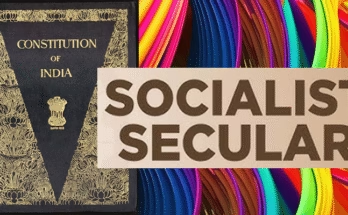 By Aruna Sharma
By Aruna Sharma
India enjoys the number two position in steel and stainless steel in the world and is considered a ‘bright spot’ by the World Steel Association. It was made possible due to the holistic approach of the government, adopted in consultation with all stakeholders to ensure that the world is aware of the potential of the country and help achieve that goal.
A combination of the continuous drive of the steel players and a conducive policy framework offered by the government, helped achieve a turnaround in the fortune of the steel players, transform the slogan of “Make in India” into a reality and save precious foreign exchange and reduce the country’s trade balance deficit.
In 2015 India’s steel sector was going through a major crisis, with huge amounts of non-performing assets (NPAs), low returns on investment, and all expansion plans put on hold. So, the government decided to hold discussions with every section of the steel sector— primary and secondary steel producers raw material providers, from manufacturers, power companies, input providers, laws and rules including tariff and non-tariff barriers–, which were becoming major constraints in the growth of the sector.
The draft steel policy was put on the web for broader consultation, and each of the feedback was meticulously examined. Surprisingly, the draft policy attracted huge interest from international steelmakers and in various forums. It was also when ‘excess steel capacity was the central focus of discussions in the group of 20 countries (G20) forum, which was toying with the idea of putting a cap on further capacity expansion on steel making. India, after wide consultation, decided to challenge the idea and came up with a new Steel Policy in 2017, with a vision to expand steel manufacturing capacity manifold.
India co-chaired the global forum on steel and took the initiative to define ‘excess steel capacity as one where the exports disrupt the world market. This gave India a window of opportunity to set a massive expansion goal– from 89 million tons (MT) in 2015 to 300MT by 2030, with the domestic market consuming 80% to 90% of the total production. With the policy framework in place, it was time to convert the steel policy into a reality. And by 2020-21 the steel production in India had touched 110MT, and it was only next to China.
The holistic approach starting from NPA resolutions, removing irritants in the mining sector, logistic arrangements, right of way for slurry pipelines, production plans, waste management, and most importantly, the DMI&SP (Domestically manufactured Iron and Steel products) that embodied the spirit of the Make in India clarion call. That required amendments to the general financial rules (GFR) by introducing the concept of ‘Life Cycle Cost’’ instead of just cost. The consumption of steel rose from 50 to 56kg/capita to 74kg/capita in the next seven years and is targeted to reach 160kg/capita by 2030.
“Adopting a holistic approach for the steel sector and removing all impediments in
running and expanding its capacity can help the sector meet its 2030 goal of 300 MT.”
The government put the NPA resolution of the steel sector under the National Company Law Tribunal, first because it knew that there were many buyers for these bankrupt steel companies. Thankfully, it did not lead to any monopoly, and the public sector steel players too benefitted from the recovery. Taking these companies to the NCLT had two major benefits: resolving such cases and a strong message that non-payment of dues would mean the loss of ownership for the owner/proprietor.
The setting up of development financial institutions (DFIs) to create a lending portfolio of Rs 5 lakh crore supplemented by debt financing of Infrastructure Investment Trusts (InvITs) and Real Estate Investment Trust (REITs) too will lead to quick resolution of stressed assets and make them productive.
Further, the government strengthened the non-tariff barriers to curb imports from China. Since the Bureau of Indian Standards (BIS) has set the highest standards for the steel sector, it brought quality consciousness among domestic players and prevented the dumping of steel products via the import route of international players. India also effectively used the World Trade Organization’s (WTO) anti-dumping and countervailing duties and non-tariff barriers. It helped reduce imports, enhancing quality standards both for domestic manufacturing and those coming from abroad.
Yet, a constant resolution of issues is the need of the hour to remove the pain points of the steel sector. It entails providing uninterrupted and adequate supplies of iron ore and coking coal to these plants so that they can work at their full capacity.. And it is especially true in Goa, where mining has been banned, and in Jharkhand, where its mining sector is struggling to meet the iron ore demands of the secondary steel manufacturers.
Iron ore production in Jharkhand has seen a 25% drop in production from 28.2 MT in FY 20 to 20.8 MT in FY 2021, which has resulted in an acute shortage and a steep hike in prices. Moreover, cancelled auctions are becoming a drag on the operational viability and adding to the cost of steel players of this iron ore-rich state. There is an urgent need for the state government to step in and expedite production of the state’s iron ore mines for steel companies to survive and thrive in these difficult pandemic times.
Any effort by the Centre and the state government to give a boost to the iron ore industry in Jharkhand will add to the gross domestic product (GDP) of the state, reduce imports by steel players, save precious foreign exchange reserves and remove the niggling irritants that stand in the way of India achieving the 300 MT targets of 2030.
(The writer is a former steel secretary in the Government of India)



